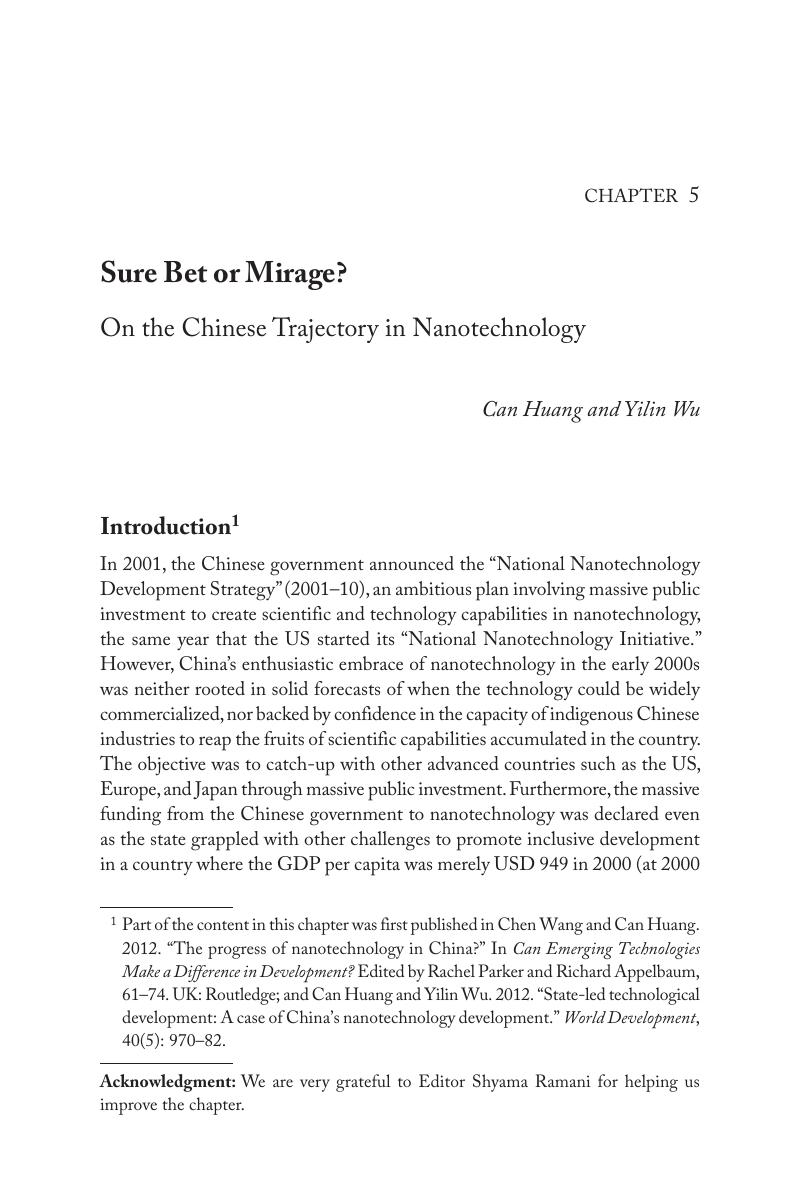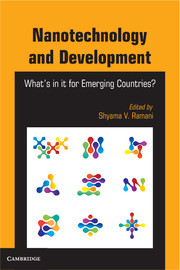Book contents
- Nanotechnology and Development
- Copyright page
- Dedication
- Contents
- List of Figures
- List of Tables
- Acknowledgments
- Part I Introduction to Nanotechnology and Participation of Developing Countries
- Part II Winning and Losing in Nanotech: Case Studies from Developed Countries
- Part III Placing Bets on Nanotech: Case Studies of Emerging Countries
- CHAPTER 5 Sure Bet or Mirage?
- CHAPTER 6 Dancing with the Scientists or How NST Emerged in Brazil
- CHAPTER 7 NST without NII?
- CHAPTER 8 On India’s Plunge into Nanotechnology
- Part IV Conclusions
- Contributors
- Index
- References
CHAPTER 5 - Sure Bet or Mirage?
On the Chinese Trajectory in Nanotechnology
from Part III - Placing Bets on Nanotech: Case Studies of Emerging Countries
Published online by Cambridge University Press: 05 June 2014
- Nanotechnology and Development
- Copyright page
- Dedication
- Contents
- List of Figures
- List of Tables
- Acknowledgments
- Part I Introduction to Nanotechnology and Participation of Developing Countries
- Part II Winning and Losing in Nanotech: Case Studies from Developed Countries
- Part III Placing Bets on Nanotech: Case Studies of Emerging Countries
- CHAPTER 5 Sure Bet or Mirage?
- CHAPTER 6 Dancing with the Scientists or How NST Emerged in Brazil
- CHAPTER 7 NST without NII?
- CHAPTER 8 On India’s Plunge into Nanotechnology
- Part IV Conclusions
- Contributors
- Index
- References
Summary

- Type
- Chapter
- Information
- Nanotechnology and DevelopmentWhat's in it for Emerging Countries?, pp. 121 - 153Publisher: Cambridge University PressPrint publication year: 2014
References
- 1
- Cited by



